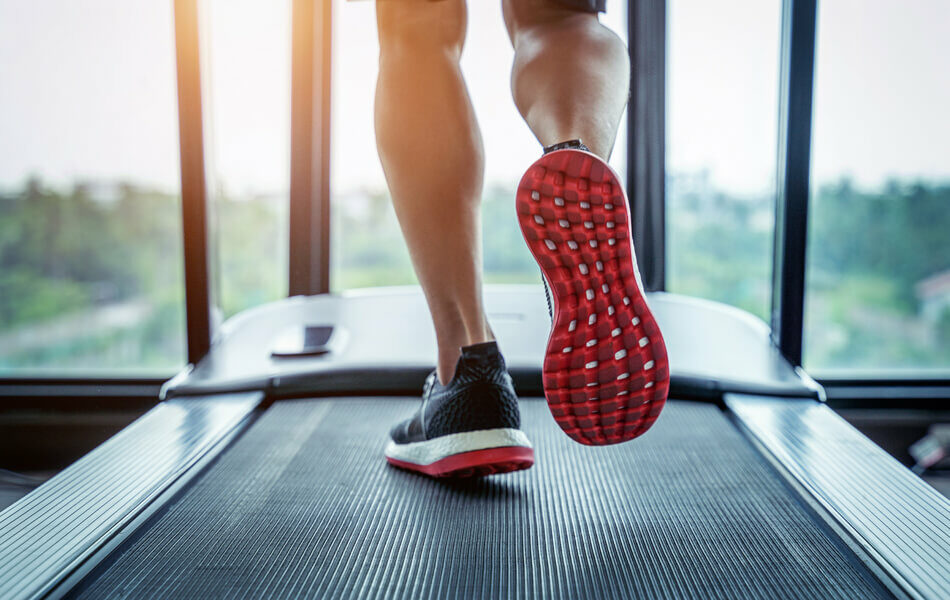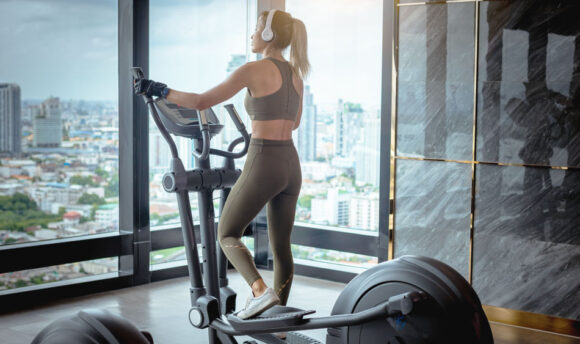Speed/Power Walking: What Is It, and How to Practice It?
Walking can be extremely beneficial to people, but what exactly is speed walking? What are its health benefits? Read out to find more.

Consider how quickly you walk when you’re running late for an appointment. That’s speed walking. It’s a fun form of exercise, especially if you can’t do more physically demanding exercises.
It is a technique that involves quick walking or walking at a speed of 15 minutes per mile or faster.
Walking fast is sometimes referred to by other words such as “brisk walking” and “power walking.” This category includes a range of fast-walking styles and tactics, such as Olympic-style race walking, which allows walkers to travel as fast as 6 minutes per mile.
Is Speed Walking Considered a Sport?
Some fast walking styles require specific techniques, while others are genuine competitive sporting events like race walking and Olympic walk racing.
Race walking employs a specific formal method that is subject to competition regulations and judging. From the time the forward foot is in contact with the ground until it passes underneath the body, the knee will remain straight and unbent. One foot is always in contact with the ground, and race walkers use arm mobility to increase their pace. Three violations during a race lead to disqualification.
Olympic race walking is a track and field event that has been part of the Olympic games since 1906. There are 3 race walks included in the Olympic program: 20-kilometer courses for men and women and 50-kilometer courses for men. Olympic-style race walkers can complete a mile in under 6 minutes.
What Is Speed Walking?
Speed walking, also known as power walking, requires you to walk quickly. It involves walking at a faster pace and with greater effort.
In other words, there will be a greater rise in strides per minute and possibly a greater usage of the upper body, particularly the arms, to move the body forward. One could notice that their breathing is more difficult and their pulse rate is higher.
Power walking technique
Regular walking has a maximum speed restriction of about 4.5mph. Walking regularly is a normal exercise. However, power walkers can increase their speed to 5.5mph by consciously altering their posture, moving more quickly, and swinging their arms.
If you want to power walk, you should walk so straight that just your eyes move when you gaze down at your feet and your head is level. You ought to stand up straight.
Longer strides, which might put stress on your buttocks, hamstrings, and lower back, will not increase your speed as much as taking 135 to 150 steps per minute. You can increase your speed by swinging your arms with your elbows fixed and your arms bent 90 degrees.
Why Is Speed Walking Often Associated With the Olympics?
One of the most complicated Olympic sports is race walking. To cross the finish line as quickly as possible, the track athletes try to walk as quickly as they can.
There are a few major differences between running and race walking, walkers are punished for sprinting. Both feet must be touching the ground at all times, and penalties are imposed when this rule is broken.
Furthermore, the athlete’s advancing leg must remain straight from the moment of contact with the ground until the athlete crosses over it, according to the regulations.
Judges observe the race and caution competitors if they appear to be violating the following rules. The race is disqualified if three-race walks are violated.
Race walking has been in the Olympics since 1908, when it debuted in London. The two Olympic race walking events in Tokyo Olympics 2020 were the 20km walk for both men and women and the 50km walk for men.
The 50km walk is dropped from the Olympic program for the 2024 Paris games and will be replaced by a mixed-gender event that is still to be determined.
How fast do Olympic speed walkers walk?
In the Olympic race walk, Antonella Palmisano of Italy won the gold medal in the women’s 2 km race at Tokyo’s Olympic Stadium with a timing of 1:29.12. That implies she completed a mile in 7 minutes, 11 seconds.
The winning time for men was 1:21:05, or a pace of 6 minutes, 31 seconds per mile.
Olympic race walking distance
At the 1920 Summer Olympics, races were run over distances ranging from 3km (1.9 mi) to 100km (62.1mi). Israeli Shaul Ladany holds the male 50-mile race walk world record with a time of 7:23:50, breaking the previous mark set in 1935.
The 50km (31mi) race walk and the 20km (12.4mi) race walk are current Olympic events (men only). The 278–311mi annual Paris–Colmar race is one instance of a lengthier race walking contest. The 1.86mi and 3.1mi indoor competitions.
How to Prepare for Speed Walking?
You must quicken your stride throughout your walking workout if you want to perform power walking. But to prevent pain or damage, it’s crucial to learn about good fast-walking mechanics before concentrating on increasing your pace.
Posture
Walkers can increase their speed by adopting a proper walking stance, using the right arm motions, and making other small adjustments to their gait.
Stride
The secret is to walk with a proper stride, rolling from heel to toe with each step and getting a strong push-off with the trailing foot. To do this, you must stop overstriding, which occurs when someone is trying to walk more quickly.
Footwear
Another crucial component is wearing the appropriate footwear. To increase speed and employ the proper one-foot motion, shoes should be lightweight, flat, and flexible.
The most accessible form of exercise for all of us is probably walking. You may perform it anywhere, and you don’t need any special tools or training.
Walking.Diet is a wellness program created by coaches and specialists that uses data from scientific studies to create routines that are unique to each person. The best place to begin your walking trip is with this program.
This health program appeals to us because of the time and care put into each plan, as well as the useful eating plan that goes along with it. Whatever your situation, it’s a fantastic place to start being active.
FAQs
Your endurance can be safely increased by speed walking. Start with simply 2–4 minutes of walking at a time if you’re currently unfit. You could eventually be able to walk for 30 minutes every day.
Race walking is thought to have developed during the Victorian era (1837–1901) when noblemen gambled on their footmen who walked behind their employers’ horse-drawn carriages for a winner.
The average pace time of power walking is 15:00 minutes per mile or 9:19 minutes per kilometer.
Race walking is one of the main sports in the Olympics. The person race walks to cross the finish line as quickly as possible.
A Word From Our Coach
During your walking workouts, practice your fast walking technique. As you become comfortable with the new manner of using your body posture, arms, feet, and legs, increase your time gradually. After warming up, practicing the method for ten minutes at a time would be an excellent place to start.
If you don’t experience any new pains or aches after a few days, you can extend this period. When you alter your gait, you may get shin pain, so start slowly.
You can start using the new strategy with speed workouts once you have increased your fast walking duration to 20 to 30 minutes and become accustomed to it.
Conclusion
Increasing your walking speed can be beneficial to your health for a variety of reasons, but before you put on your shoes, make sure they are the proper kind and establish your baseline walking speed.
Before you start our speed-building walking programs, spending some time reviewing your posture, arm mobility, and footwork is a worthwhile investment of time.

















































 Select your language:
Select your language: 








